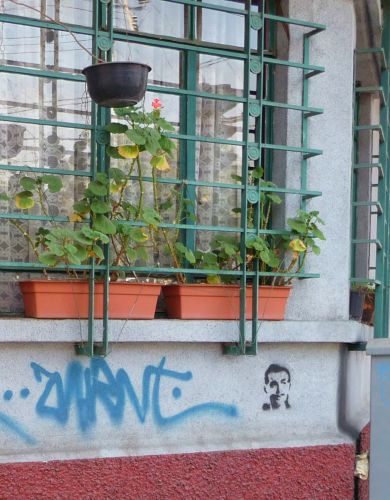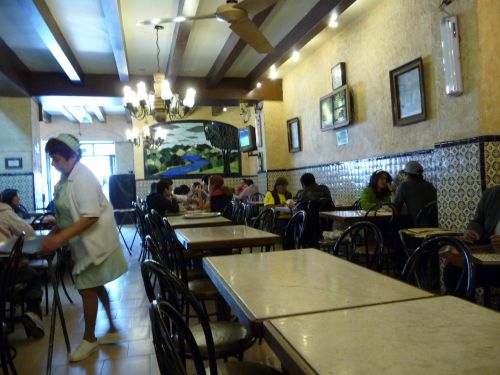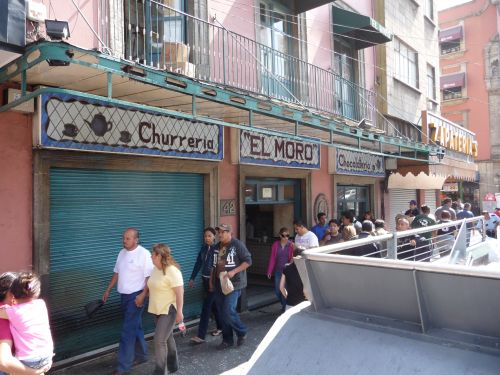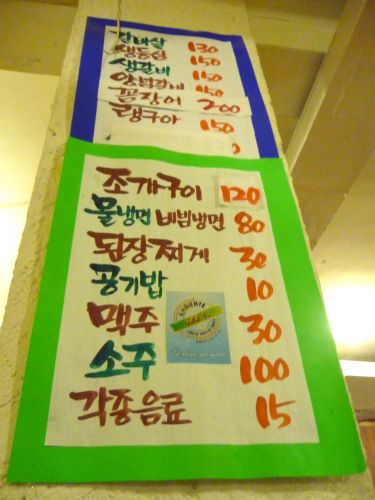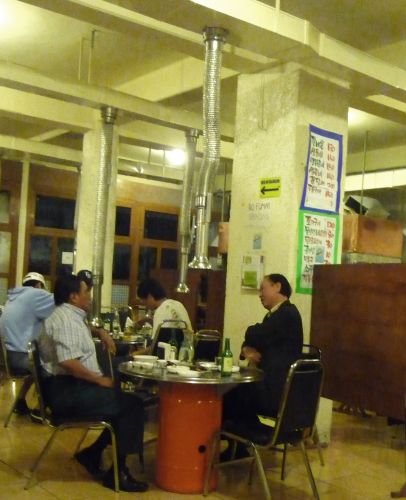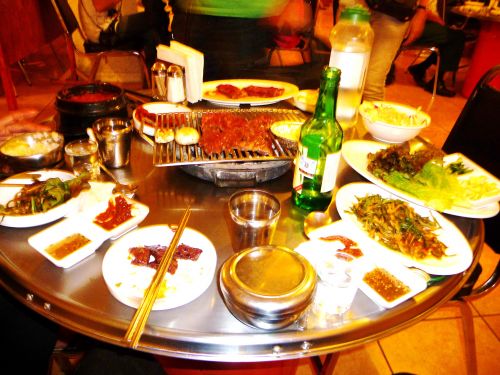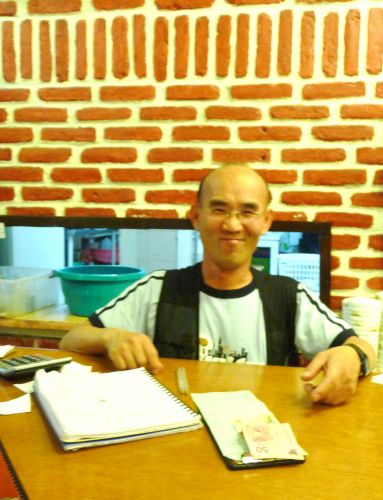Immaculately dressed, every salt-and-pepper hair in place, sporting a Clark Gable moustache, Mauricio Garcés starred in a series of saucy comedies in the 60s and 70s, in the role of a mature and world-weary seducer, famous for lines of dialogue like "Debe ser horrible tenerme y después perderme" (It must be horrible to have me and then lose me) and "Dios sabe que tengo miles de razones por ser vanidoso" (God knows I have thousands of reasons to be vain). He died in 1989, but in the hearts of many lives on: Recently I saw this stencil of him on a wall in the Colonia Del Valle.
Mexico City
Mr. Clean, the Tortilla King and a couple of Cuba Libres
Photo by Ana Hop
Few readers will need me to recommend the Bar Zinco, a jazz joint in the centro histórico located in what used to be the basement vaults of a bank. With red velvet curtains, black walls and exposed brick, it is a little like a jazz club from an old movie, and far cooler than most such places in New York.
The Zinco Big Band, composed of seventeen of Mexico City's best musicians, only plays once in a blue moon. If you are lucky enough to notice that they are doing a gig, don't think twice, just go. You're bound to enjoy their recreations of arrangements by Count Basie, Nelson Riddle, Charles Mingus and Thad Jones.
Here they are on a recent night with a New York singer named J.D. Walter, who performed a couple of sets of Sinatra numbers, punctuated by his continuous remarks that he doesn't regularly sing Sinatra numbers. Walter wore an earring in each ear, a look that, combined with a shaven head, suggested the words, "stronger than dirt."
Photo by Ana Hop
The band is conducted by Eugenio Elias, the gentleman in the dinner jacket central in the above photo. The caballero with the moustache at the extreme right of the picture is Don Roberto González Barrera, who owns Maseca, the corn flour from which most of Mexico's tortillas are made, as well as Banorte, one of the country's most prominent banks. He regularly appears on the lists of staggeringly wealthy people published by Forbes magazine. According to one of the owners, he shows up at the Zinco frequently.
Apparently, one way that Don Roberto stays so rich is by bringing his own liquor to bars -- he and his blonde companion arrived at Zinco with a bottle of Aniversario, a Venezuelan rum that is exquisite as cognac and not so easy to find in Mexico. Sadly, they diluted that good liquor with Coca Cola.
Click here to see more work by Ana Hop, the lovely and talented photographer responsible for the above photos.
Chocolate and churros
Little in life is reliable, but you can count on El Moro, which is open 365 days a year, 24 hours a day. El Moro is a joint on the Eje Central Lázaro Cárdenas #42 in the Centro Histórico. It is a cafeteria that serves the traditionally Spanish combination of hot chocolate and deep-fried, sugar-coated doughnuts called churros.
The hot chocolate at El Moro comes in four varieties (special, French, Spanish, or Mexican, in varying degrees of sweetness). To be frank, neither hot chocolate nor the brick-heavy churros is precisely my idea of comfort food. Still, I am extremely comforted whenever I go to this place. Maybe it is the fact that it has been here forever. And maybe it is because some of the waitresses seem to have been here since opening day.
Struttin' with some barbecue
When people ask me what I miss about the United States, I instantly say "my friends." After that it often takes me a while to come up with anything else. The truth is that there are certain foods I crave that you cannot find in Mexico City. Among them is barbecue. I am talking about the kind you get south of the Mason Dixon line.
Luckily, the Dixie variety is not the only barbecue in the world. Here in Mexico City there is a significant Korean community, mostly made up of importers and exporters. Although they are not large in numbers, they are very visible, principally due to their restaurants and grocery stores on the fringes of the Zona Rosa.
Last week I had some kickass Korean barbecue at Nadefo, on Calle Liverpool #183, near the corner of Florencia. I have never been to Korea but it was as good as any I've had in Korean restaurants in New York. My dining companion, a Korean American, liked it so much that she wanted to return the following night.
There is a small menu, including an outstanding spicy vegetable and tofu soup, and a couple of noodle dishes. Mostly you go to Nadefo for meats that are grilled over burning charcoals. If you don't know what you are getting into, the waiters -- or Mr. Kim, one of the owners -- will explain.
My paper
When I lived in New York, it was a guilty pleasure among certain supposedly educated citizens, myself included, to pick up the tabloid The Post in the morning. Frequently, the front-page headlines were so good that nothing inside the paper could possibly measure up. The most famous example, from the 1980s, is “Headless Body in Topless Bar.”
Few of my friends here, except for the novelist J.M. Servín, admit to reading Metro, the local equivalent to the Post. Most days there is a bloody corpse on the cover (as frequently the result of a traffic accident as of a murder). The headlines are priceless, although hard to translate into English. Here are a couple of the milder examples from about a month ago, in the good old days before the swine flu crisis.
The headline above, about the explosion of 60 cylinders of gas after a truck crashed, is a variation on a standard insult, ¡A su madre!, which is a sort of all purpose expletive whose meaning depends on the context. Literally it is an insult to someone’s mother. Metro’s version, !Gásumadre! combines the word gas with the insult. (Like I said, something gets lost in the translation.) The headline on top of the page alludes to the arrest of various pedophiles, one of whom was a priest.
If you read this blog regularly, you may remember a recent post about a 46-year-old systems engineer named David Mondragón Vargas. While wearing a wig and a dress, he was arrested on the metro during rush hour, in cars reserved for women only. He had been sexually accosting them. The headline here, Vestida … para tortear, is a variation on the title of a Brian De Palma film from the 1980s called Dressed to Kill, or, in Spanish, Vestida para matar. The translation of Metro's headline is, more or less, “Dressed ... to cop a feel.” (The swine flu crisis is the best thing that ever happened to Mondragón, as it literally wiped him off the pages of the newspapers.)
